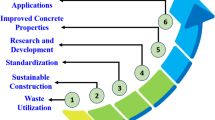Abstract
A new method of assessing the effective specific surface area based on the successive thermal desorption of water vapor at different temperature stages of sample drying is analyzed in comparison with the conventional static adsorption method using a representative set of soil samples of different genesis and degree of dispersion. The theory of the method uses the fundamental relationship between the thermodynamic water potential (Ψ) and the absolute temperature of drying (T): Ψ = Q − aT, where Q is the specific heat of vaporization, and a is the physically based parameter related to the initial temperature and relative humidity of the air in the external thermodynamic reservoir (laboratory). From gravimetric data on the mass fraction of water (W) and the Ψ value, Polyanyi potential curves (W(Ψ)) for the studied samples are plotted. Water sorption isotherms are then calculated, from which the capacity of monolayer and the target effective specific surface area are determined using the BET theory. Comparative analysis shows that the new method well agrees with the conventional estimation of the degree of dispersion by the BET and Kutilek methods in a wide range of specific surface area values between 10 and 250 m2/g.
Similar content being viewed by others
References
A. F. Vadyunina and Z. A. Korchagina, Methods for Studying Soil Physical Properties (Agropromizdat, Moscow, 1986) [in Russian].
V. G. Vityazev and S. I. Lapekina, “Adsorption interaction of water vapor and soil solid phase,” Vestn. Mosk. Univ., Ser. 17: Pochvoved., No. 2, 37–41 (2002).
A. I. Volkov and I. M. Zharskii, Big Chemical Handbook (Sovremennaya Shkola, Moscow, 2005) [in Russian].
A. D. Voronin, Structural-Functional Hydrophysics of Soils (Moscow State Univ., Moscow, 1984) [in Russian].
J. Gregg and K. S. W. Sing, Adsorption, Surface Area, and Porosity (Academic, London, 1982; Mir, Moscow, 1984).
P. M. Sapozhnikov, “Specific surface and adsorption properties of irrigated chernozems in Moldova,” Vestn. Ross. S-kh. Akad., No. 8, 18–22 (1992).
A. V. Smagin, “Fundamental dependence of relative air humidity on temperature and its possible use in thermodynamics of soil moisture,” Ekol. Vestn. Sev. Kavk. 11 (3), 4–17 (2015).
Theory and Methods of Soil Physics (Grif i K, Moscow, 2007) [in Russian].
Science About Ground (Moscow State Univ., Moscow, 2005) [in Russian].
A. B. Umarova and T. V. Ivanova, “Dynamics of the dispersity of model soddy-podzolic soils in a long-term lysimetric experiment,” Eurasian Soil Sci. 41 (5), 519–528 (2008).
Yu. G. Frolov, Lectures on Colloidal Chemistry (Khimiya, Moscow, 1989) [in Russian].
E. Arthur, M. Tuller, P. Moldrup, and L. W. de Jonge, “Evaluation of theoretical and empirical water vapor sorption isotherm models for soils,” Water Res. 52, 190–205 (2015). doi 10.1002/2015WR017681
Moisture sorption isotherm generator, Operator’s manual, Version 3.0, Decagon devices, 2007-2009. http://www.decagon.com.
P. M. Sapozhnikov and A. N. Prokhorov, “Approaches to calculating monitoring indicators of the physical state of soils,” Eurasian Soil Sci. 24, 37–53 (1992).
A. V. Smagin, “Level of aggregate organization in sandy soils of pine biogeocenoses,” Eurasian Soil Sci. 25, 15–25 (1993).
A. V. Smagin, “Physically based mathematical models of the water vapor sorption by soils,” Eurasian Soil Sci. 44(6), 659–669 (2011). doi 10.1134/S1064229311060135
A. V. Smagin, N. B. Sadovnikova, A. S. Bashina, A. V. Kirichenko, and V. G. Vityazev, “Theoretical and experimental substantiation of a thermogravimetric method for assessing the water-retention capacity and specific surface area of disperse systems,” Eurasian Soil Sci. 49 (12), 1382–1391 (2016). doi 10.1134/S1064229316100136
I. I. Sudnitsyn, A. V. Smagin, and A. P. Shvarov, “The theory of Maxwell-Boltzmann-Helmholtz-Gouy about the double electric layer in disperse systems and its application to soil science (on the 100th anniversary of the paper published by Gouy),” Eurasian Soil Sci. 45(4), 452–457 (2012). doi 10.1134/S106422931204014X
Author information
Authors and Affiliations
Corresponding author
Additional information
Original Russian Text © A.V. Smagin, A.S. Bashina, V.V. Klyueva, A.V. Kubareva, 2017, published in Pochvovedenie, 2017, No. 12, pp. 1477–1484.
Rights and permissions
About this article
Cite this article
Smagin, A.V., Bashina, A.S., Klyueva, V.V. et al. Thermal Desorption Analysis of Effective Specific Soil Surface Area. Eurasian Soil Sc. 50, 1428–1434 (2017). https://doi.org/10.1134/S1064229317120080
Received:
Published:
Issue Date:
DOI: https://doi.org/10.1134/S1064229317120080




